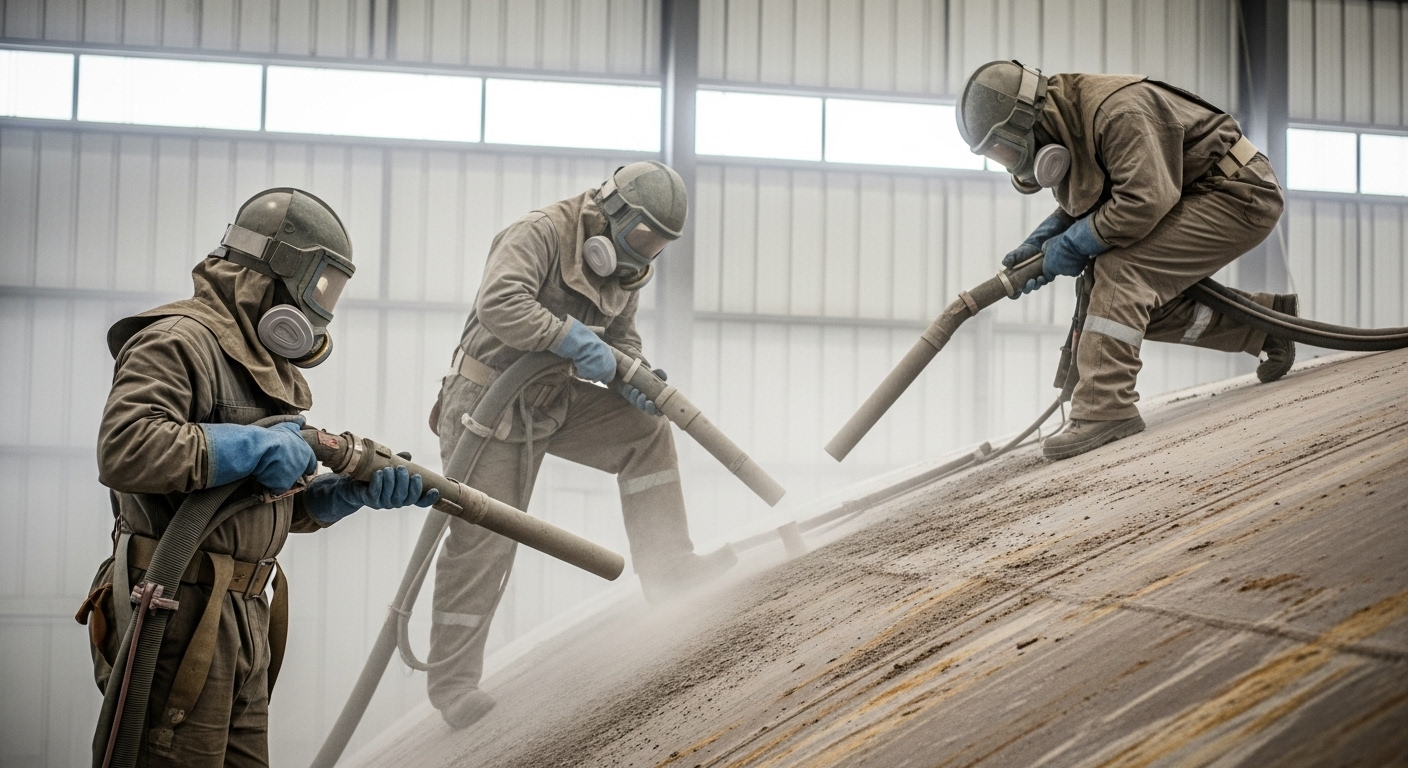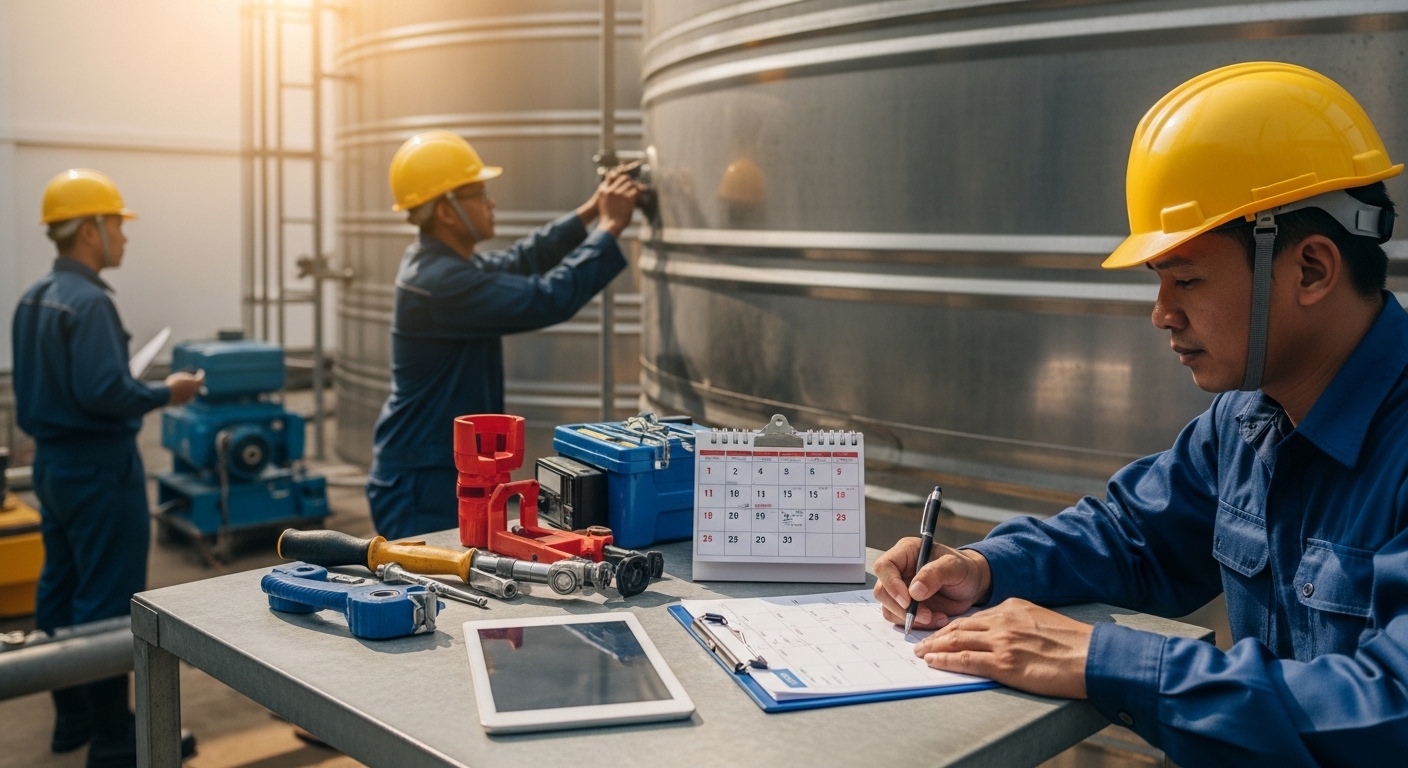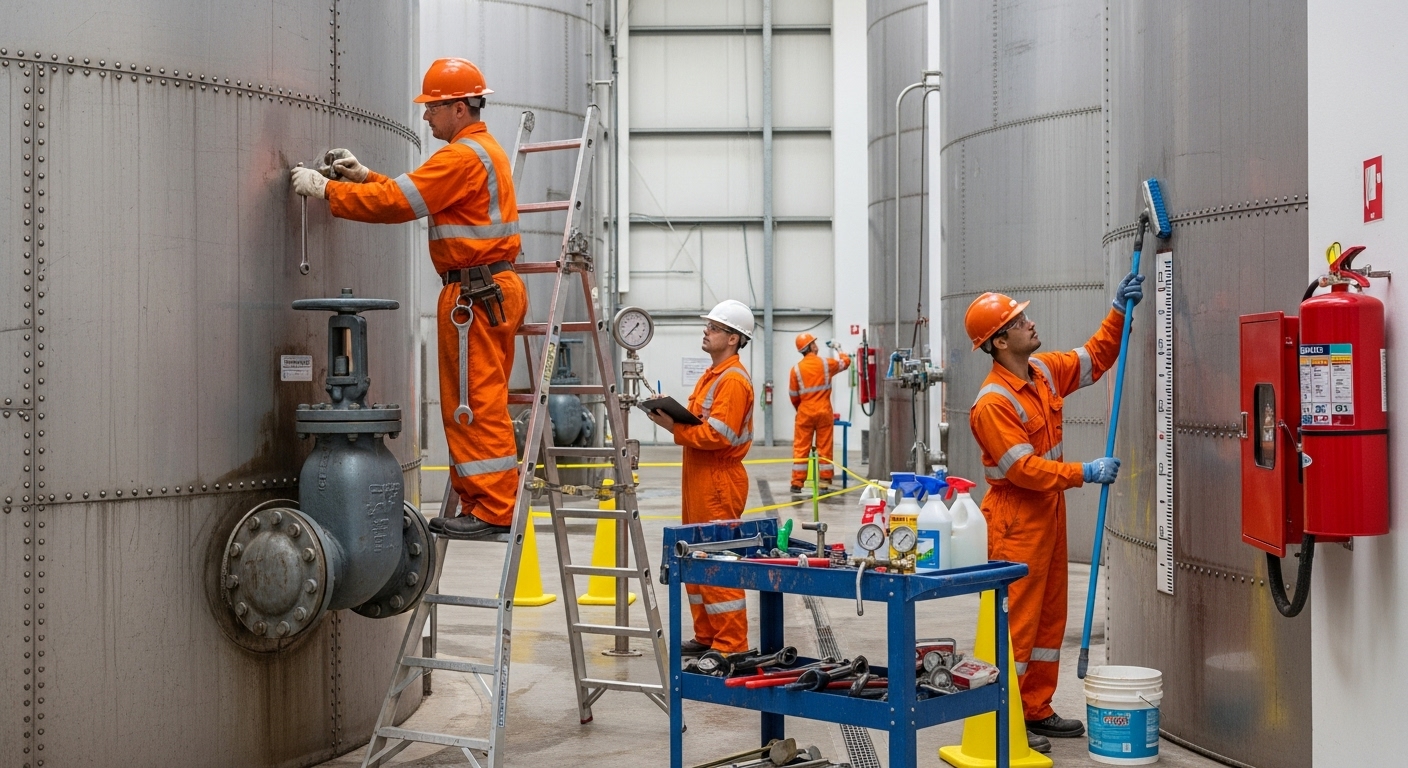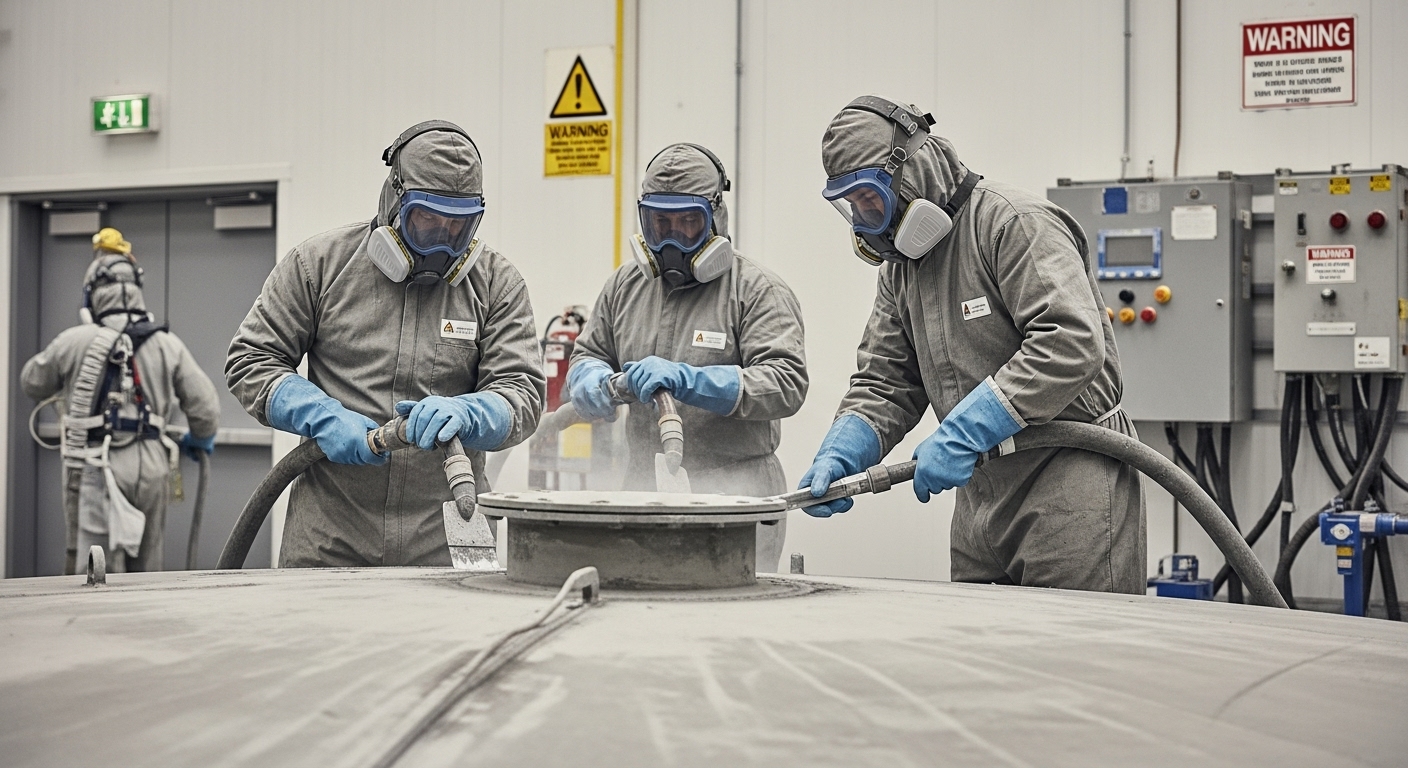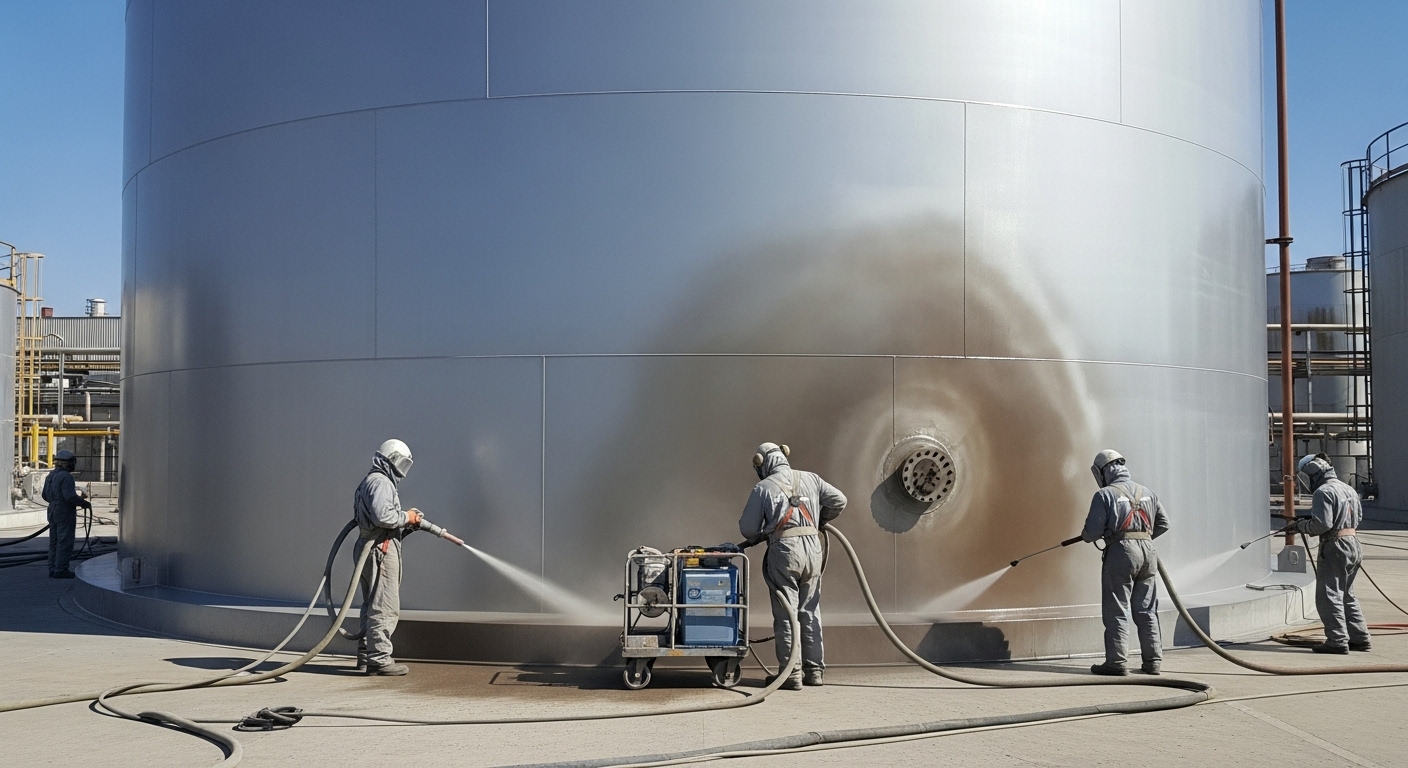Water towers are more than just towering landmarks in our communities—they are lifelines that keep safe, clean water flowing to homes, schools, and businesses every single day. Because of their size and visibility, many people assume they’re indestructible.
But the truth is, these structures face unique challenges that demand regular and professional water tower inspection services. Without inspections, hidden issues like structural wear, coating failures, and even safety risks can go unnoticed until they become serious problems.
Here’s the thing: inspecting a water tower isn’t like walking into a small water tank or checking a pipe. The height, scale, and complexity of these structures introduce challenges that only skilled professionals can address.
This blog explores the biggest hurdles inspectors face during water tower inspection and the practical solutions that keep these vital systems safe, reliable, and long-lasting.
Why Water Tower Inspection Is Different from Standard Tank Evaluation
Water towers are elevated by design, which makes inspections significantly more complex than ground-level tanks. Unlike small storage tanks, towers require a combination of elevated structure inspection and specialized techniques to ensure accuracy and safety.
The challenge begins with accessibility. Inspectors must often climb or use lift systems to reach the highest points. In some cases, drone technology is deployed for a safer and more detailed view. This makes the tower integrity assessment both technical and labor-intensive.
On top of that, inspectors must also account for external factors like weather, wind speed, and visibility at heights. Unlike flat tanks, where a simple structural evaluation is sufficient, towers demand an extra layer of planning and caution. And when you add community reliance into the equation, delaying or cutting corners on these inspections is simply not an option.
Tackling The Complexity of Elevated Tank Inspection
Performing an elevated tank inspection requires advanced planning and specialized equipment. Inspectors must first secure safe access, often through rigging systems, cranes, or industrial climbing gear. Drones are now increasingly being used for aerial tank evaluation, offering inspectors high-resolution imagery while minimizing human risk.
Another layer of complexity lies in surface evaluation. Towers are exposed to harsh weather conditions year-round, so identifying rust, cracks, or tower condition analysis at elevation can be a challenge. Professionals also take into account tower painting considerations, since damaged coatings can accelerate deterioration if not addressed promptly.
The solution here is a combination of modern technology and human expertise. Drones may capture visuals, but hands-on inspection is still critical to feel for structural weakness and verify data accuracy. This blend ensures that even small issues are detected before they threaten the tower’s longevity.
Key Challenges During Tower Structural Assessment And Their Solutions
One of the most demanding parts of a tower structural assessment is ensuring that every joint, weld, and beam is evaluated for long-term durability. Unlike ground tanks, towers must handle not only the pressure of water but also the external stress of wind and height.
Corrosion at height often goes unnoticed until it’s advanced, which is why inspectors emphasize thorough structural evaluation. For example, bolts and weld seams at high altitudes can show early deterioration, which, if left unchecked, compromises the tower’s integrity.
Solutions come in the form of elevated safety protocols and innovative inspection methods. Inspectors use ultrasonic testing to detect internal weaknesses, while rope-access professionals conduct physical inspections at spots too difficult for drones. By combining technology with human skill, inspections address both visible and hidden risks effectively.
The Role of Height Access Inspection in Safety and Accuracy
One of the most dangerous challenges of water tower inspections is height itself. Reaching the top requires careful adherence to elevated safety protocols, not just for the inspectors but for the integrity of the inspection process.
During height access inspection, inspectors must stabilize themselves while performing visual checks, surface testing, and photographic documentation. Strong winds, lightning risks, and even small missteps at this altitude can create hazards. This is why only certified professionals with rigorous training should ever conduct such assessments.
A solution that’s becoming increasingly popular is the integration of drones with high-altitude inspection systems. While drones can reduce the time inspectors spend on risky climbs, physical verification is still required. When both are combined, inspection accuracy improves while minimizing risk to human life.
Addressing Aerial Tank Evaluation and Ongoing Maintenance Needs
Aerial tank evaluation has revolutionized how professionals approach water tower inspection. With drones, inspectors can now collect precise images of areas that are otherwise nearly impossible to access. This doesn’t just improve safety; it also allows for more detailed reporting.
However, aerial inspections alone aren’t enough. Towers require specialized maintenance needs, including coating reapplications, structural reinforcements, and welding repairs. These tasks can only be scheduled after a thorough hands-on evaluation confirms the findings of drone imagery.
The long-term solution is pairing aerial data collection with a clear maintenance planning strategy. By doing so, communities save costs on emergency repairs while ensuring their water towers remain reliable for decades.
Cost, Risk, And the Human Element in Water Tower Inspection
Another challenge unique to towers is cost and logistics. Because inspections are more dangerous and complex, they often require larger crews, more equipment, and longer project timelines. Safety assessment pricing is naturally higher than for smaller tanks, but these costs reflect the intense planning and safety measures involved.
Additionally, inspectors must account for specialized maintenance needs, like repairing structural cracks at height or addressing immediate painting requirements to protect against corrosion. These add to the cost but prevent larger, more expensive issues down the road.
What this really means is that water tower inspections are about more than compliance—they’re about safeguarding community health, minimizing long-term costs, and keeping water systems resilient against time and nature.
Prioritizing Inspections for Safer Communities
At the end of the day, water tower inspection is about more than checking a box on a compliance sheet—it’s about ensuring safety, reliability, and peace of mind for entire communities. Towers face unique challenges, from extreme heights to harsh weather, but with the right solutions, these structures can remain dependable for decades.
Ignoring inspections only allows small issues to grow into costly, even dangerous problems. That’s why combining professional expertise, drone technology, and strict elevated safety protocols is the smartest way forward. Whether it’s identifying corrosion early, planning for specialized maintenance needs, or simply verifying tower stability, inspections protect both infrastructure and people.
If your tower is due for a review, don’t wait for problems to show themselves. Schedule Your Water Tower Inspection today and ensure your community’s most vital resource stays safe and secure.


